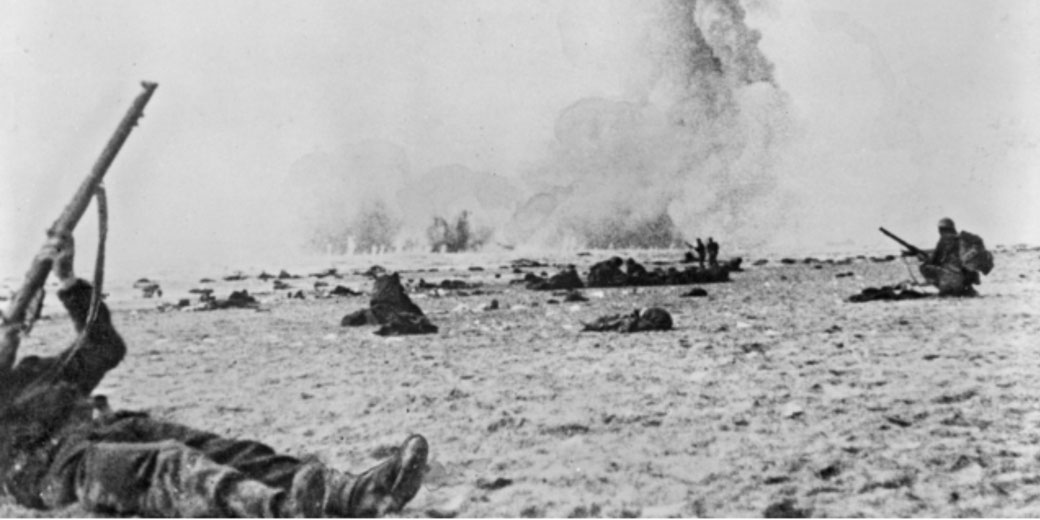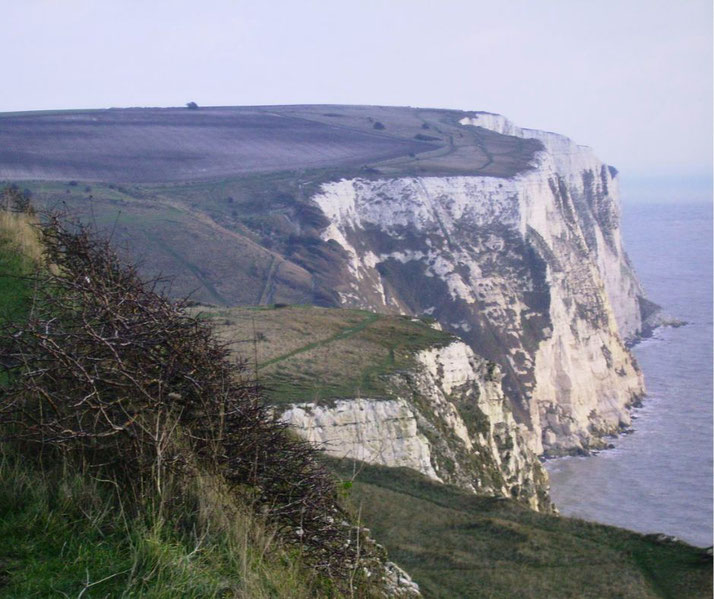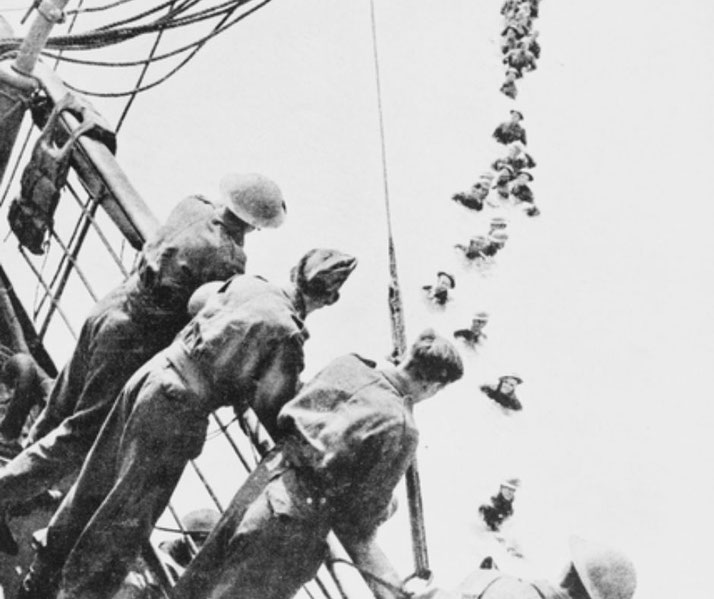The miracle at Dunkirk: How Operation Dynamo saved over 300,000 lives from Hitler's forces

The Dunkirk evacuation, which is often referred to as Operation Dynamo, holds a prominent place in the history of World War II.
This extraordinary event unfolded at the end of May and beginning of June 1940, and involved the large-scale evacuation of British and Allied troops from the beaches and harbor of Dunkirk, France, as they found themselves encircled by German armies.
But how did the British government successfully execute this miraculous achievement?
How the British army walked into a trap
World War II began in September 1939 with Germany's invasion of Poland.
This act led Britain and France to declare war on Germany just a few days later.
However, the initial months of the conflict saw limited direct military land engagement in western Europe.
As a result, this period was often referred to as the "Phoney War." But, this relative calm was shattered in the spring of 1940.
On May 10, 1940, Germany launched a swift and powerful invasion of the Low Countries (Belgium, the Netherlands, and Luxembourg) and France.
Bypassing the heavily fortified Maginot Line along the French-German border, the Nazi forces stormed through the Ardennes Forest unopposed.
Utilizing a combination of air power and fast-moving ground forces, a strategy known as Blitzkrieg or "lightning war," German troops quickly overran the Netherlands and Belgium and pushed into northern France.
The Allied forces, comprising mainly British, French, and Belgian troops, were caught off guard by the speed and ferocity of the German advance.
As a result, the Germans exploited weaknesses in the Allies' defensive strategy.
By May 20, they had reached the Channel coast, cutting off the Allied forces in Belgium and northern France from the rest of the French army.
This rapid advance led to the encirclement of the British Expeditionary Force (BEF), along with sizable French and Belgian contingents, around the port town of Dunkirk.
The situation for the encircled troops was dire: they were hemmed in by German forces on land and the English Channel to their backs.
The likelihood of a large-scale capture or destruction of these Allied forces was a real threat.
Such an outcome that would have been a severe blow to the Allied war effort.
What was Operation Dynamo?
As the German forces closed in on the Allied troops trapped around Dunkirk, the British War Office realized that a massive evacuation was necessary to avoid a catastrophic defeat.
Vice Admiral Bertram Ramsay, who was appointed as the commander of the operation, began planning under challenging conditions in the dynamo room of the naval headquarters at Dover Castle.
The initial aim was to evacuate at least 45,000 troops over two days. However, the scale of the operation quickly expanded as the gravity of the situation became clear.
In response, the Royal Navy mobilized over 200 vessels: including destroyers, minesweepers, and other large ships.
These would be crucial in ferrying large numbers of troops from Dunkirk back to England.
This was thanks to their enormous size and speed, which were ideal, especially for transporting the wounded and for the larger-scale movements of troops.
Why were British civilians called on to help?
As the Royal Navy orchestrated the evacuation of Allied troops from Dunkirk, it became apparent that the large naval vessels were unable to reach the soldiers stranded on the beaches due to shallow waters.
This limitation led to the mobilization of an array of smaller civilian vessels, collectively known as the "Little Ships."
These Little Ships were a diverse fleet comprising over 700 vessels, including fishing boats, pleasure crafts, lifeboats, and merchant marine boats.
Many of these were privately owned and were requisitioned for the operation, with some owners volunteering to captain their vessels across the English Channel.
Others were manned by naval personnel. Their sizes ranged significantly, with some being small enough to navigate the shallow waters and pick up troops directly from the beaches.
However, it was a risky operation getting these Little Ships to the operation area. The English Channel, especially the area around Dunkirk, was under constant threat from German air raids and mines.
Nevertheless, the civilian sailors and their naval counterparts successfully navigated the waters, often under bombardment from the Luftwaffe.
Unfortunately, the involvement of these Little Ships also added a significant layer of complexity to the operation.
Coordination between the myriad of small boats and the larger naval vessels was critical and, since civilians were interacting with miliary personnel, communication was frequently difficult.

The life-threatening challenges facing the evacuees
There were a number of life-threatening challenges that the operation faced over the course of many days.
One of the most significant challenges was the constant threat of German attacks.
The Luftwaffe, Germany's air force, frequently bombed the beaches and the English Channel.
They targeted both the troops waiting to be evacuated and the vessels attempting to rescue them.
The relentless aerial assault caused heavy casualties and also created chaos and panic among the soldiers.
What complicated matters were the weather conditions. Although the weather was relatively calm, the clear skies favored the German bombers.
This would make the ships and soldiers much more vulnerable to aerial attacks.
Moreover, the operation's success was heavily dependent on the tides, which affected the ability of ships to approach the beaches and the timing of the evacuations.
However, it is easy to forget that the psychological strain on both the evacuating troops and the rescuers was immense.
The soldiers, many of whom were exhausted and demoralized by the last few weeks of fighting, had to maintain discipline and order while waiting for evacuation under dire circumstances.
Meanwhile, the sailors and civilian volunteers manning the evacuation vessels had to operate often without proper rest, constantly under the threat of attack.
How the evacuation happened...
During the first day of the evacuation, May 26, approximately 7,000 men were evacuated.
This slow start was primarily due to the limited number of ships available, and the difficulties posed by the shallow waters near the beaches.
Then, as the operation progressed, the number of troops rescued each day began to increase significantly.
By May 29, over 47,000 troops had been evacuated, and on May 30, a remarkable 53,000 soldiers were brought to safety.
This increase was due in part to the arrival of more vessels, including the famous "Little Ships".
They played a vital role in ferrying troops from the beaches to larger ships waiting offshore.

The evacuation reached its peak on June 1, when over 68,000 men were rescued in a single day.
During this critical period, the Royal Air Force also played a crucial role by providing air cover to protect the evacuation efforts, despite being significantly outnumbered by the Luftwaffe.
One of the most remarkable aspects of the evacuation was the orderly conduct of the troops during the operation.
In the face of the desperate situation, there were few instances of panic or disorder.
The discipline of the troops, aided by the efforts of rear-guard units who held off the German advance, was instrumental in the ultimate success of the evacuation.
By the final day of the operation, June 4, the evacuation had achieved astonishing results.
In total, over 338,000 Allied soldiers, including around 198,000 British and 140,000 French and Belgian troops, were successfully evacuated.
This achievement was far beyond the initial expectations and was a testament to the extraordinary efforts of all involved.
Why the Dunkirk evacuation was so important
In the immediate aftermath, the evacuation had a significant strategic impact.
The preservation of a large portion of Britain's army meant that the United Kingdom retained a substantial military force, which would have otherwise been lost.
This was crucial, considering the looming threat of a German invasion of Britain.
The saved manpower included experienced soldiers, who would play a vital role in subsequent military campaigns.
Across Britain, the event was perceived by the public as a miraculous escape.
This sentiment bolstered British morale at a time when the country faced the threat of invasion and the reality of being the only major power actively fighting Nazi Germany after the fall of France.
The most famous person involved in this evacuation was Winston Churchill, the British Prime Minister.
He played a key role in shaping the media narrative around Dunkirk. In his speech to the House of Commons on June 4, 1940, he celebrated the evacuation as a "miracle of deliverance."
However, he also tempered this optimism with realism, stating that "wars are not won by evacuations."
Ultimately, Churchill's speeches during this period were instrumental in rallying the British people, by emphasizing the need for continued resistance and the inevitability of further struggles.
For Germany, the failure to capture or destroy the Allied forces at Dunkirk was a missed opportunity.
While the German military had been successful in its rapid advance through Western Europe, the escape of such a large number of Allied troops forced Germany to reconsider its plans for an invasion of Britain, as the British military was not as weakened as they had hoped.
Strategically, the evacuation influenced the Allies' approach to the war, with a renewed focus on defense.
This included strengthening their air defenses and bolstering their naval capabilities.
This would prepare them for the dramatic Battle of Britain.
What do you need help with?
Download ready-to-use digital learning resources
Copyright © History Skills 2014-2025.
Contact via email
With the exception of links to external sites, some historical sources and extracts from specific publications, all content on this website is copyrighted by History Skills. This content may not be copied, republished or redistributed without written permission from the website creator. Please use the Contact page to obtain relevant permission.





